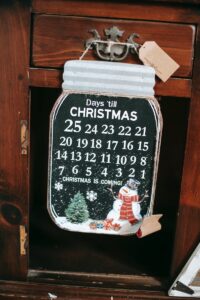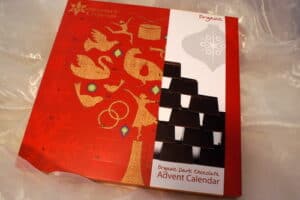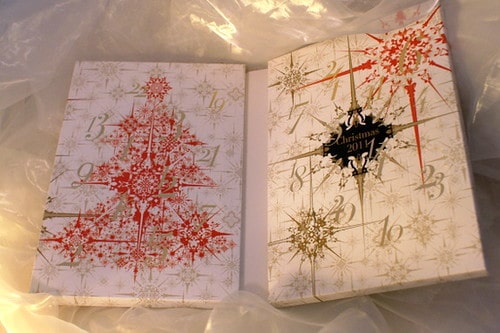The holiday season is synonymous with joy, anticipation, and traditions. One such beloved tradition is the Advent calendar, a delightful way to count down the days leading up to Christmas. While we often associate these calendars with small surprises behind paper doors, there’s a fascinating history behind their evolution, especially when it comes to the chocolate-filled versions.
In this blog post, we’ll dive deep into the history of Advent calendars, from the very first printed versions to the modern chocolate calendars. Let’s unravel the sweet story of who made the first chocolate Advent calendar and how it has become a global sensation.
The Origins of Advent Calendars
Advent calendars have a long and rich history, dating back to the early 19th century. They were originally designed to help individuals mark the days leading up to Christmas, a period of reflection and devotion for many Christians. The concept of counting down to Christmas has its roots in the fourth century, with German Protestants marking walls or using chalk marks. Over time, these simple traditions evolved into printed Advent calendars with little doors to open.
The First Printed Advent Calendar

The emergence of the first printed Advent calendar in the early 19th century marked a significant turning point in the tradition’s history. These calendars weren’t just a way to count down to Christmas; they also held a deeper meaning. Each door revealed devotional images or Bible verses, providing individuals with a spiritual connection during the Advent season. This unique blend of religious significance and anticipation resonated with many, particularly in Germany, where it initially took root.
As the tradition spread beyond Germany’s borders, it became an integral part of the Christmas season in various countries. The first printed Advent calendar’s widespread adoption showcased its universal appeal, transcending cultural boundaries to become a cherished holiday tradition that continues to bring joy and anticipation to people of diverse backgrounds.
The Advent Calendar Evolution
The evolution of Advent calendars represents a fascinating shift in their purpose and content. Initially rooted in devotion, early Advent calendars were primarily focused on the spiritual aspect of counting down to Christmas. However, as time passed, they underwent a significant transformation. They evolved into more secular versions, marked by the inclusion of holiday-themed illustrations and, at times, small treats hidden behind the doors.
This shift broadened their appeal, making them not only a source of spiritual reflection but also a delightful tool to build excitement, particularly for children. This change in content allowed Advent calendars to bridge the gap between tradition and holiday festivity, adding an element of daily joy to the countdown towards Christmas day.
Chocolate-Filled Advent Calendars Emerge

The introduction of chocolate-filled Advent calendars marked a pivotal moment in the evolution of this beloved tradition. It brought a delightful and tangible aspect to the daily countdown to Christmas, appealing to a broad audience. The anticipation of opening a tiny door each day to discover a sweet treat resonated with both children and adults, making Advent calendars a cherished part of the holiday season. The mere thought of unwrapping a piece of chocolate every day added an extra layer of excitement and joy to the countdown, transforming it from a simple tradition into a source of daily delight.
As chocolate Advent calendars gained popularity, they not only became a source of joy but also a reflection of the changing holiday culture. These calendars offered a tangible way to embrace the festive spirit and experience the sweetness of the holiday season. The tradition of including chocolate in Advent calendars quickly became a global phenomenon, uniting people in the simple pleasure of counting down to Christmas with a daily dose of chocolate. This shift in the Advent calendar tradition underlines the enduring nature of holiday customs, adapting to the times and continually bringing happiness to the season.
The Quest for the First Chocolate Advent Calendar
The quest to uncover the origin of the first chocolate Advent calendar is indeed a captivating journey through time. While Gerhard Lang’s name is frequently linked to this innovation, the historical trail is far from straightforward. The early 20th century witnessed a surge in creativity, as manufacturers across Europe sought to enhance the traditional Advent calendar experience by incorporating chocolates.
However, pinpointing a single inventor remains elusive due to disputes and controversies surrounding the claim. This ambiguity only adds to the intrigue of this sweet mystery, highlighting the enduring allure of the chocolate Advent calendar and the desire to attribute its creation to an individual or company.
The chocolate Advent calendar’s evolution is a testament to the way traditions can adapt and captivate hearts across generations. The ongoing debate surrounding its inception serves as a reminder of the enduring fascination with the holiday season and the joy it brings. Whether it was Gerhard Lang or another innovator who first introduced chocolate into the Advent calendar, the legacy of their creativity lives on in the countless chocolate calendars that continue to delight people around the world, year after year.
The Modern Chocolate Advent Calendar
Chocolate-filled Advent calendars have evolved into delightful works of art. Manufacturers have expanded their offerings to cater to a diverse range of tastes, with options ranging from classic milk chocolate to the rich, velvety depths of dark chocolate. What’s more, specialty flavors have emerged, catering to those seeking unique and gourmet experiences during the holiday season.
The creativity extends beyond the delectable treats themselves, as designers now pour their imagination into the calendars’ aesthetics and packaging. These calendars have become more than just a way to count down the days; they’ve transformed into collectible holiday items, adorning homes with a touch of festive charm and personal expression.
Today’s chocolate Advent calendars are not only a delightful way to anticipate Christmas but also a reflection of the changing consumer preferences and the artistry of holiday traditions. The selection of flavors, the thought put into design, and the joy they bring encapsulate how this time-honored tradition has adapted and thrived in a contemporary world where both tradition and creativity remain at the heart of the holiday spirit..
Worldwide Popularity

Advent calendars have become a universally cherished tradition, spreading far beyond their European origins. In various countries, people have embraced this concept, infusing it with their own unique customs and celebrations. These calendars are not just about counting down to Christmas; they have taken on diverse cultural interpretations.
For example, in some regions, special Advent calendars are crafted to mark significant feast days along with Christmas, further enriching the holiday experience. This global embrace of Advent calendars underscores their enduring appeal and adaptability, making them a symbol of shared joy and anticipation during the holiday season.
Notable Moments in Advent Calendar History
The Advent calendar tradition has seen its share of notable moments. During World War II, they brought a sense of normalcy and comfort to families, even in challenging times. The world’s largest Advent calendar was erected, showcasing the grandeur of this holiday tradition. In recent years, some manufacturers have pushed the boundaries with extravagant and expensive Advent calendars, making them collector’s items.
The Joy of the Chocolate Advent Calendar
The joy of the chocolate Advent calendar lies in its ability to encapsulate the spirit of the holiday season in a delightful, bite-sized form. As each door is opened, revealing a sweet treat, it not only marks the passage of time but also rekindles the childlike wonder and excitement that Christmas brings.
The simple act of unveiling a small chocolate piece each day connects us to the anticipation we felt as children, eagerly awaiting the arrival of Christmas. It’s a tradition that bridges generations, allowing both young and old to share in the joy, making it a heartwarming and cherished part of the holiday season.
Furthermore, the chocolate Advent calendar serves as a daily reminder of the spirit of giving and sharing, values at the core of the Christmas celebration. It encourages us to take a moment each day to savor a small indulgence and to share the experience with loved ones. Whether enjoyed alone or as a family ritual, it fosters a sense of togetherness and appreciation for the simple pleasures in life.
Summary: Who Made the First Chocolate Advent Calendar?
In conclusion, the history of Advent calendars, from the first printed versions to the modern chocolate-filled ones, is a testament to the enduring appeal of tradition and the joy it brings to the holiday season. While the question of who made the first chocolate Advent calendar remains shrouded in history, one thing is clear – this delightful tradition has evolved to become a global sensation, adding sweetness and anticipation to the four-week period leading up to Christmas. Whether you enjoy classic or modern chocolate calendars, the Advent calendar continues to be a heartwarming part of our holiday celebrations.
As we unwrap the history, we can appreciate how a simple concept from the 19th century has transformed into a cherished tradition that warms hearts worldwide. So, as the Advent season approaches, remember to enjoy your chocolate-filled Advent calendar and count down the days until Christmas with a smile.
Other related articles:
